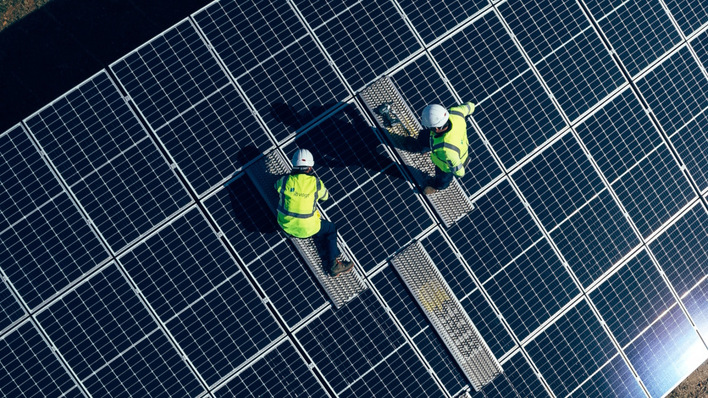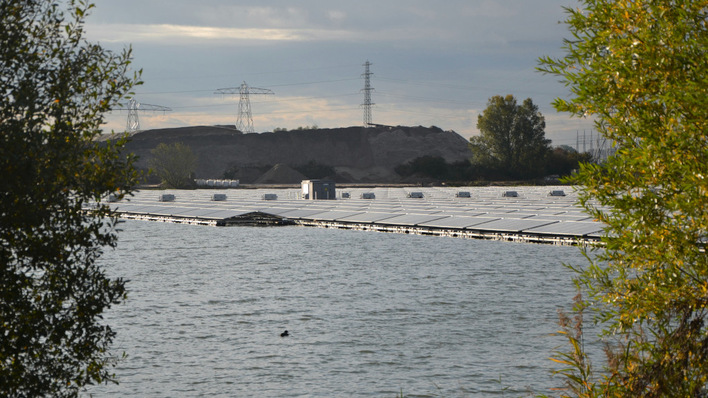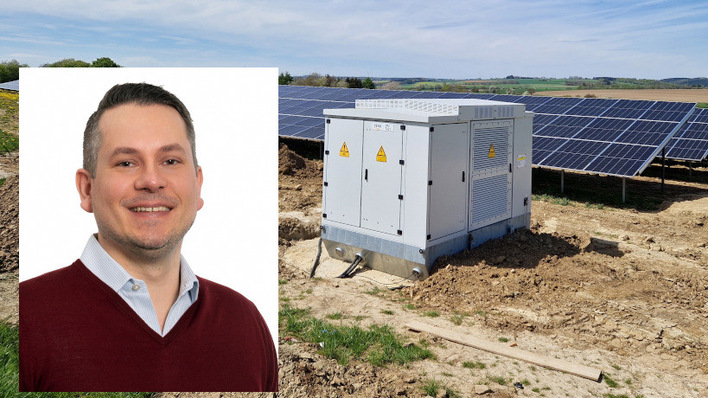For one year, a team of researchers compared the monitoring data of solar systems and their sensors with the real data of 25 weather stations of the German Weather Service (DWD) in Germany. The result: temperature changes in the atmosphere depend not only on clouds and greenhouse gases, but also on aerosol particles. These tiny fine dust particles float in the air and can reflect or absorb solar radiation, even if they are only very small. The more of these particles there are in the air, the less solar energy reaches the earth and thus also the solar modules.
Difference of up to 500 kilowatt hours
Researchers from the Leibniz Institute for Tropospheric Research (Tropos), the German Weather Service (DWD) and the International Centre for Sustainable Development (IZNE) at Bonn-Rhein-Sieg University of Applied Sciences were involved in the project. In a long-term experiment, they measured how the aerosols influence the yield of photovoltaic systems. The evaluation now published showed for the example year 2015 that there is a clear gradient in solar energy in Germany. Due to the higher position of the sun, the sun shines more intensively in the south of the Federal Republic on an annual average of up to 500 kilowatt hours per square metre and year than in the north.
See also: SunBrush sweeps the Middle East off its feet
Since more aerosols from continental sources arrive in the east, the solar radiation there is attenuated more by the small fine dust particles than in the west. Since both effects overlap, the yield of photovoltaic systems on the Neisse River, bordering Poland, is up to 50 kilowatts per square metre lower than in the Alps.
Taking aerosols into account in forecasts
However, other influencing factors play a role in practice, such as population density, the location of industrial and agricultural enterprises and, of course, the altitude at which the solar plant is located. "Nevertheless, the radiation effect of aerosol should definitely be taken into account in the daily forecasts for solar power," emphasises Hartwig Deneke, head of the Satellite Remote Sensing working group at Tropos.
Better control of grid operation
This is not only important for the economic efficiency of solar plants, but above all for grid operators. Because the more photovoltaic generators feed into the grid, the greater the impact of even the smallest changes. In order to be able to better control the grids even with an increasing share of solar power, they should take the dust particles into account. However, more research is needed to estimate the influence of aerosols more precisely and limited to regional areas.
Sign up for our free newsletter and never miss the latest news about the solar energy transition!
Evaluate a longer period of time
Nevertheless, the study emphasises that ground measurements of solar radiation are important as a reference, since the actual solar energy on solar installations varies greatly and this can only be partially predicted by air quality models so far. The analysis now published is an important step towards an accurate solar weather report, but the road ahead is still long, the researchers emphasise. "In our study, we were only able to evaluate one year. However, solar radiation and air quality sometimes fluctuate significantly between years," Jonas Withuhn from Tropos knows. "In the next step, we therefore want to evaluate a longer period of time, from 2003 to 2021, and we are curious to see whether our findings from 2015 can also be transferred to other years on a one-to-one basis," he says, holding out the prospect. (mfo)
Also interesting: An autonomous cleaning robot for solar panels







